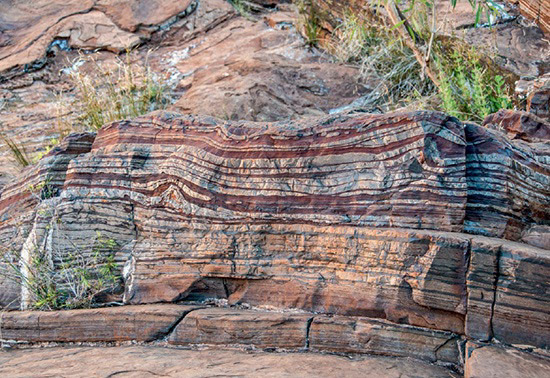Banded Iron Formations (BIFs), striking geological features, provide evidence of Earth’s early atmospheric changes. These formations showcase semi-regular, striped layers of reddish and non-reddish rocks, resembling a sandwich with layers of meat and cheese.
The reddish layers in BIFs are believed to form when localized increases in oxygen levels oxidize dissolved iron or shallow-water sediments, turning them into red or orange iron oxides. Once the oxygen is depleted, subsequent layers retain the colors of unoxidized precursor minerals, resulting in the characteristic banded appearance.
Although a few BIF outcrops dating back to the early- to mid-Archean era suggest sporadic early oxygen saturation, these formations became widespread in the geological record from about 2.5 to 1.8 billion years ago. This period aligns with the emergence and proliferation of photosynthetic cyanobacteria, known for producing free oxygen. As these cyanobacteria grew in number, oxygen accumulated in the oceans and seas until it reached a saturation point, oxidizing the oxygen-poor sediments on the seafloor and turning their exposed parts red. This cycle of sedimentation, alternating between oxidized and anoxic layers, may have continued for millions of years.
While many aspects of BIF formation and timing remain enigmatic, the rapid emergence of extensive oxidative/anoxic episodes during 2.5 to 1.8 billion years ago, followed by the prevalence of thick red beds of rocks, strongly suggest cyanobacteria’s significant role in this geologic and atmospheric puzzle. BIFs, therefore, stand as a testament to the profound impact these early life forms had on the Earth’s atmosphere and surface.

